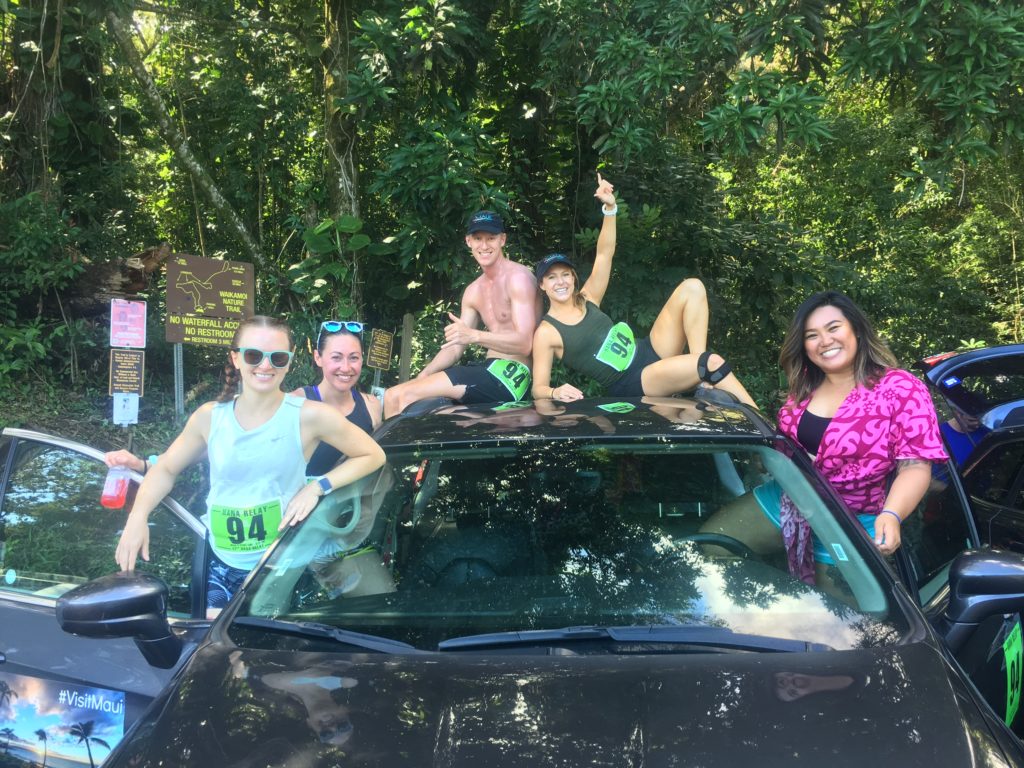 I’ve had some pretty awesome shows of running support in the past—everything from mapped-out cheering schedules from my friends and family to homemade signs with creepily large cutouts of my face.
I’ve had some pretty awesome shows of running support in the past—everything from mapped-out cheering schedules from my friends and family to homemade signs with creepily large cutouts of my face.
That’s all great, but when it comes to keeping your legs pumping on a long uphill, there’s nothing that can compare with the motivation of running with a team. Your supporters aren’t just on the sidelines; they are pounding the pavement with you.
Problem is, in most cases, running can be a pretty solitary sport. Exception: the relay race, which have evolved quite a bit from what you remember from your middle-school track days.
With today’s relay race, you choose a team—comprising anywhere from six to 12 people—to complete a total distance that no one on your team could run solo. The majority cover close to 200 miles, typically with time limits of about 24 to 36 hours. Each person runs a total of three legs, varying in terms of mileage, gradation, and overall difficulty. For some teams, the goal is to come in first. For others, it’s to win a costume award or just have a good time or take in the sights.
Runners load up into one or two vans, and as each person runs, the van bee-lines it to the next exchange point. You’ll high-five your teammate, send them on their way, get back in the van, and start cheering—until your next leg is up. It makes a decidedly solo sport into a scrappy team affair.
“What draws people in 2018 is a social connection and something that can be done as a team,” says Dan Floyd, chief operating officer of the Hood to Coast Relay, perhaps the mother of relays.
The growth of the Hood to Coast Relay mirrors that of relay races in general: It began as an eight-team relay back in 1982, and now, more than 1,000 teams and 12,000 runners complete the 200-mile race each year. And it’s not even close to being the only one out there: The immensely popular Ragnar Relay now boasts 20 200-mile road relays across the U.S., Canada, and Europe.
As a runner, I’ve done everything from a half marathon to the Red Bull 400 (sprinting up an Olympic ski slope). What I hadn’t tried yet was a relay, so I decided to give it a shot. I signed up for Maui’s Hāna Relay—a 52-mile course with 617 (hairpin) turns, and way more up-and-back-down-again hills that I could count—in September 2018. I figured it was a good starter relay, because with a team of six people running three legs of about 2 to 4 miles each, it felt totally doable.
In the 8 hours and 13 minutes it took us to cross the finish line—plus all of the sweat, high-fives, and dancing it out in our ridiculously pungent van named Susan—I realized that relays provided what had long been missing from my running routine: camaraderie.
Within days of doing my “one and done” relay race, I had signed up to join a team for another: traversing nearly 200 miles across Arizona this winter. I knew I better prepare more seriously for this one—so I tapped into some relay experts to gain some tips on exactly I should know beforehand.